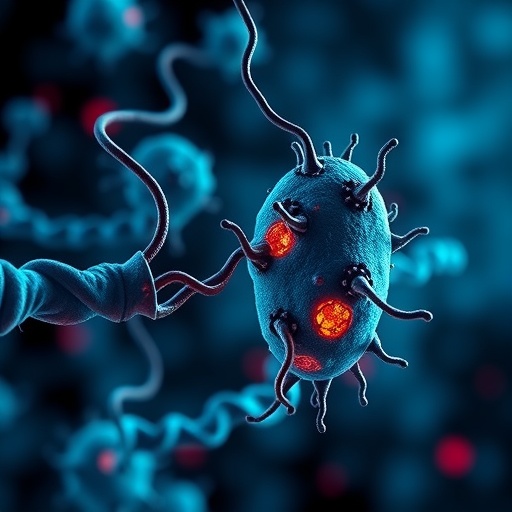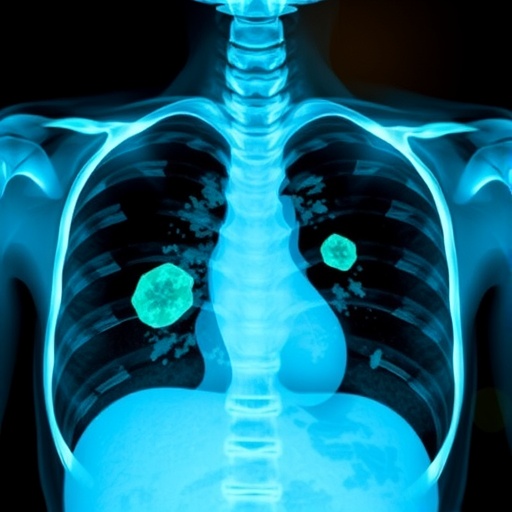In a groundbreaking development that could redefine therapeutic strategies for ischemia reperfusion injury, recent research highlights the pivotal role of NRF1, a master regulator of mitochondrial function, in orchestrating cellular adaptations aimed at mitigating oxidative stress and inflammatory responses. This discovery sheds new light on the intricate molecular mechanisms that cells deploy to combat the damaging effects of ischemia reperfusion—a complex pathological process often observed in conditions such as heart attacks, strokes, and organ transplants.
The recent study by Li, J., Yan, J., Tu, G., and colleagues, published in Cell Death Discovery, delves deeply into the role of NRF1 (Nuclear Respiratory Factor 1), a transcription factor long recognized for its role in mitochondrial biogenesis and respiratory function. Their findings illustrate that NRF1 acts as an essential coordinator of mitochondrial adaptations during ischemia reperfusion, effectively attenuating the intracellular accumulation of ROS and dampening downstream inflammatory cascades. This positioning of NRF1 as a molecular sentinel heralds new opportunities for targeted therapies.
Mechanistically, NRF1’s function transcends mere regulation of mitochondrial gene expression. The study demonstrates that upon ischemic insult and subsequent reperfusion, NRF1 initiates a transcriptional program that enhances mitochondrial quality control, including upregulation of antioxidant enzymes and enhancement of mitochondrial dynamics. Such actions enable the organelles to maintain bioenergetic homeostasis despite fluctuating oxygen levels and to sequester ROS before they inflict widespread molecular damage.
Of particular interest is the interplay between mitochondrial adaptations and immune signaling. Mitochondria are not only energy powerhouses but also hubs of innate immune signaling owing to their ability to release mitochondrial DNA and ROS as danger signals. NRF1’s repression of excessive ROS production thus tips the balance in favor of cellular survival by preventing overactivation of inflammasome complexes and subsequent pro-inflammatory cytokine release, which otherwise exacerbate tissue injury.
The implications of these findings extend beyond ischemia reperfusion injury. Chronic conditions marked by persistent oxidative stress and inflammation, such as neurodegenerative diseases, metabolic disorders, and certain cancers, may similarly benefit from strategies that harness NRF1’s regulatory capacity. By modulating mitochondrial response pathways, it may be possible to curtail pathological inflammation while preserving necessary immune functions.
Furthermore, this research highlights the importance of mitochondrial dynamics—the processes of fission and fusion that maintain mitochondrial integrity and function. NRF1 appears to fine-tune these dynamics, promoting fusion events that help dilute damaged mitochondrial components, thereby reducing mitochondrial dysfunction-driven ROS generation. This nuanced control over mitochondrial morphology represents a sophisticated cellular tactic to preserve organelle health under stress.
The study also underscores the relevance of mitochondrial biogenesis as a reparative response. NRF1 augments the synthesis of new mitochondria, replenishing the mitochondrial pool that may have been compromised due to oxidative damage. Enhanced mitochondrial biogenesis not only meets increased energetic demands during reperfusion but also provides a fresh cadre of organelles capable of more efficient and less deleterious respiratory activity.
Importantly, the researchers used sophisticated in vitro and in vivo models to elucidate NRF1’s function, ensuring that findings reflect physiologically relevant scenarios. Mouse models of ischemia reperfusion injury with genetically modulated NRF1 levels exhibited marked differences in tissue injury and inflammatory profiles, substantiating NRF1’s protective role. These models pave the way for future preclinical trials aimed at NRF1-targeted interventions.
Emerging from this research is the tantalizing possibility of pharmacological activation of NRF1 as a therapeutic avenue. Small molecules or gene therapy approaches designed to enhance NRF1 activity could conceivably bolster mitochondrial resilience and suppress pathological inflammation, improving outcomes not only in acute ischemic episodes but also in transplantation settings where reperfusion injury is a significant complication.
Given the centrality of ROS in ischemia reperfusion pathology, antioxidants have been investigated extensively with mixed results. The specificity of NRF1’s approach—targeting mitochondrial ROS production at the source rather than scavenging indiscriminately—represents a paradigm shift. This precision reduces the risk of interfering with physiological ROS signaling necessary for normal cellular functions and immune responses.
Moreover, this study integrates concepts from mitochondrial biology and immunometabolism, fields that have increasingly intersected due to mitochondria’s emerging roles in immune regulation. NRF1 sits at this nexus, linking metabolic adaptation to immune modulation, and providing a unifying framework for understanding how cells maintain homeostasis under stress.
The study also raises new questions about the upstream signaling pathways that activate NRF1 during ischemia reperfusion. It suggests involvement of redox-sensitive kinases and possibly hypoxia-inducible factors, which warrants further exploration. Deciphering these upstream regulators will enrich our capacity to manipulate NRF1 activity therapeutically.
Additionally, understanding the temporal dynamics of NRF1 activation—when it is most effective to intervene during the ischemia reperfusion timeline—could optimize clinical translation. For instance, preconditioning strategies could enhance NRF1 activity prior to reperfusion, minimizing tissue damage.
Given the complexity of ischemia reperfusion pathology, combining NRF1 activation with other therapeutic strategies targeting complementary pathways might yield synergistic benefits. This combinatorial approach could tackle multiple facets of the injury response, improving tissue salvage and functional recovery.
In conclusion, the identification of NRF1 as a coordinator of mitochondrial adaptations that reduce ROS accumulation and inflammatory signaling represents a significant advancement in the field. This discovery not only illuminates fundamental cellular defense mechanisms but also opens promising avenues for therapeutic innovation in ischemia reperfusion injury and related diseases marked by oxidative stress and inflammation.
Subject of Research: NRF1’s role in mitochondrial adaptations to modulate intracellular reactive oxygen species and inflammatory responses during ischemia reperfusion injury.
Article Title: NRF1 coordinates mitochondrial adaptations to dampen intracellular ROS and inflammatory responses during ischemia reperfusion.
Article References:
Li, J., Yan, J., Tu, G. et al. NRF1 coordinates mitochondrial adaptations to dampen intracellular ROS and inflammatory responses during ischemia reperfusion. Cell Death Discov. 11, 236 (2025). https://doi.org/10.1038/s41420-025-02461-5
Image Credits: AI Generated
DOI: https://doi.org/10.1038/s41420-025-02461-5
Tags: Cell Death Discovery research findingscellular adaptations to ischemia damageheart attack recovery strategiesischemia reperfusion injury mechanismsmitochondrial function and healthNRF1 role in mitochondrial defenseorgan transplant preservation techniquesoxidative stress and inflammatory responsereactive oxygen species overproductionstroke damage mitigationtherapeutic strategies for ischemiatranscription factors in cellular stress response





